by Lorri | Apr 23, 2014 | UnCorked
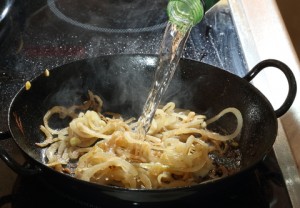 There are countless rules surrounding wine, but one of my least favorites is the old-fashioned guidance, “Always cook with the same wine you will be drinking.” I remember the first time the rule struck me as one I would not be following in my kitchen. I was making beef stew and the recipe instructed me to add two cups of red wine. It just happened the wine I was serving and had opened for dinner was a beautifully aged Bordeaux. I could not convince myself to pour half of my bottle into the pot. Thus beginning my exploration of wine being used as a cooking ingredient.
There are countless rules surrounding wine, but one of my least favorites is the old-fashioned guidance, “Always cook with the same wine you will be drinking.” I remember the first time the rule struck me as one I would not be following in my kitchen. I was making beef stew and the recipe instructed me to add two cups of red wine. It just happened the wine I was serving and had opened for dinner was a beautifully aged Bordeaux. I could not convince myself to pour half of my bottle into the pot. Thus beginning my exploration of wine being used as a cooking ingredient.
Many cooks have experimented using different wines (ranging from the least expensive to super premium) in the same recipe. Generally the results were similar, but with a few notable exceptions. Wines in lowest price range tend to be either slightly sweet or bland and generally imparted these characteristics to the final dish. Premium wines tend to be very flavorful but lose their nuance as they cook. In general the best wines to cook with fall in the middle, $8 to $12 wines with simple flavors and aromas.
Be cautious of using grocery store “cooking wine,” as it tends to have additional additives and excessive salt and likely will change the taste of a recipe calling for red or white wine.
When faced with the typical vague instruction “2 cups dry white wine” or “1 cup red wine,” opt for a dry style unless the recipe is specific in listing a sweet wine as an ingredient. However, if a wine label reads “fruity,” this does not mean sweet. A safe white wine is chardonnay, and for reds, cabernet sauvignon, merlot and pinot noir are good options.
A wine that is often overlooked is dry vermouth. Most famous for its role in martinis, this dry white wine has been steeped with various spices, herbs and seasonings. It’s known as the chef’s secret because it adds interesting lightly spicy hints to sauces.
The longer the dish is cooking, the more of the wine’s character is lost. For long-simmering dishes, the specific wine is less important than one for a quick saute. Also consider the color. White wine is generally used in most stocks and sauces because the red wine would change the color of the food.
If you are concerned about alcohol, it is important to note that alcohol boils at about 178 degrees, so if you are braising, boiling, or cooking the food for a prolonged period most of the alcohol will evaporate off. In briefly cooked dishes, as much as 85 percent of the alcohol may remain.
My advice is to follow the guidelines, but save your best bottle of wine for your glass and not the cooking pan.
by Lorri | Apr 16, 2014 | UnCorked
 There are many special foods and traditions associated with the Easter celebration.
There are many special foods and traditions associated with the Easter celebration.
The beautifully decorated egg is perhaps the most recognizable. The egg is a symbol of rejuvenation and rebirth and in some Christian traditions, eggs were not to be eaten during the Lenten season. At the end of Lent, hard cooked eggs were brought to the table in much anticipated celebration. They were often painted red to symbolize the Easter joy.
Pairing wine with egg dishes isn’t as difficult as some experts would have us believe. It isn’t the egg’s flavor per se, but the runny yolk that supposedly destroys the texture and flavor of wine. White wines are good matches for green salads topped with hard-cooked egg or tuna salad studded with diced hard cooked eggs.
THE VALUE
- 2013 Domaine Bousquet Torrontes/Chardonnay, Argentina (about $13 retail)
THE SPLURGE
- 2013 Michael David Winery Sauvignon Blanc, California (about $17 retail)
There are many explanations why meats such as ham and lamb are often the centerpieces of our Easter menus. Some food historians say meats are symbolic of luck and abundance, and others suggest it is simple practicality of timing. Ham’s arrival at the Easter table is a good example. Hogs were slaughtered in the fall, then cured and smoked. The process took five to six months, with hams being ready just in time for Easter.
Ham can be an easy wine pairing when salt is the main flavoring. Wines love pairing with salt and can make almost any food match. But when sweet glazes are added, the match up gets trickier.
For pairing with sweet-glazed ham, consider wines without overpowering tannins or moderately acidic whites.
THE VALUE
- 2012 Echelon PinotNoir, California (about $15 retail)
THE SPLURGE
- 2011 Presqu’ile Pinot Noir, California (about $49 retail)
Lamb’s popularity is likely more symbolic of the holiday, and is in many places the main dish of the Easter Sunday meal.
A simple preparation offers a mild flavor that easily pairs with light-bodied red wines but adding heavy spices or sauces creates a rich, robust and earthy taste.
THE VALUE
- 2009 Chapillon Cuvee Paul Grenache, Spain (about $15 retail)
THE SPLURGE
- 2013 Stepping Stone Cabernet Franc, California (about $48 retail)
by Lorri | Apr 9, 2014 | Tips, UnCorked
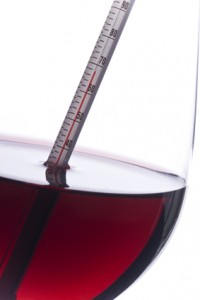 A liquid’s temperature plays a critical role in taste and smell. So much so that tasting a drink at the wrong temperature can ruin the experience. Just consider your reaction to warm, flat soda or room temperature coffee. Yuck, right?
A liquid’s temperature plays a critical role in taste and smell. So much so that tasting a drink at the wrong temperature can ruin the experience. Just consider your reaction to warm, flat soda or room temperature coffee. Yuck, right?
The same goes for wine. This is why some wine lovers tend to obsess about correct serving temperatures. Serving a wine at its ideal temperature brings out the wine’s depth of taste and aromas. Red wines that are served too warm lose fruit and structure leaving only the taste of tannin and alcohol. White wine served too cold rarely has any flavor at all beyond alcohol.
The only white wines that should be served very cold are the very inexpensive ones. Most of these wines are simple in their flavors and aromas.Sparkling wines and Champagne are also best when cold. Not only does the cold help retain bubbles when opening, but many people enjoy the wine’s texture when colder.
For other white wines and even expensive or mature bubbly, these are best served on the cooler rather than cold side, think 45 to 52 degrees. The reason it’s important is because if the wine is too cold, you lose all of the aromas and you are unable to appreciate the subtle, delicate aromas most of these wines offer.
When it comes to red wines, most of us have them sitting around on a wine rack at what we consider room temperature, but the old adage of serving red wine at room temperature doesn’t really apply. In reality, most of us keep our thermostats set between 68 to 75 degrees, depending on the time of year. This is far too warm for serving most red wines. But because lower temperatures will make a high-tannin wine like cabernet sauvignon even more tannic and bitter, it is wise to not serve them cold. Most red wines taste best served between 58 and 65 degrees. If you don’t have temperature-controlled storage for red wines, don’t be afraid to pop it in the refrigerator for a quick 5- to10-minute chill. If it’s summer, even placing the wine near an air-conditioning vent for a few hours will get the job done.
When dining out, it takes confidence to voice your opinion on what the wine’s temperature is when you are served. But your server needs to be aware of this issue. You wouldn’t think twice about pointing out a cold cup of coffee or undercooked food, and it should be the same with wine. Asking for an ice bucket for your white wine throughout dinner or one for a quick cool down of your reds can improve the overall enjoyment of your dining experience.
by Lorri | Feb 12, 2014 | UnCorked
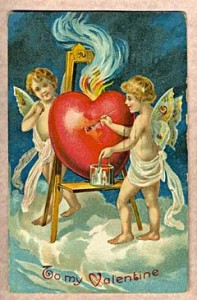 Valentine’s Day is Friday and if you’re stuck on what wine to buy, here are some ideas. With so many choices, I called local retailers for advice on what is trending for love birds.
Valentine’s Day is Friday and if you’re stuck on what wine to buy, here are some ideas. With so many choices, I called local retailers for advice on what is trending for love birds.
The most popular gift for female drinkers (with overwhelming consensus) was Champagne or anything that bubbles. I admit there is a special something about the celebratory feel bubbly offers. If you are looking to genuinely impress, consider finding vintage Champagne with a year special to your valentine, such as the year of your first date, wedding anniversary, major life accomplishment or first child. Brut (dry) rose bubbly was another popular recommendation. After all, what is more romantic than the pink or rosy color of flowers, candy and hearts?
For men and women alike, robust red full-bodied wine is another favorite for a valentine. I would recommend asking for assistance from your fine wine retailer. With the many styles available, sometimes knowing the story behind a vintage can aid in selection.
My favorite and most romantic of reds is the Calon Segur. The label of this prestigious property of Saint-Estephe has an elegant heart surrounding the name, making it an ideal choice for the occasion. It’s said that owner Marquis Nicolas-Alexandre de Segur claimed, “I make wine in Latour and Lafite but my heart is in Calon” as the reason behind the heart.
Consider an aged red wine rather than a bottle from the most recent vintage. I always find these wines offer an added romance of longevity and commitment to time.
THE VALUES
- NV Segura Viudas Brut Rose, Spain (about $12 retail)
- 2011 Maddalena Cabernet Sauvignon, California (about $19 retail)
THE SPLURGES
- NV Roederer Estate Brut, California (about $28 retail)
- 2010 Reynolds Family Winery Persistence Red, California (about $57 retail)
- NV Veuve Clicquot Yellow Label, France (about $68 retail)
- NV Moet & Chandon Imperial Rose, France (about $77 retail)
by Lorri | Feb 5, 2014 | UnCorked
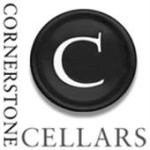 Recently Cornerstone Winery founder Dr. Michael Dragutsky and his wife, Beni, spent time in central Arkansas tasting and dining with other wine lovers. Living just up the road in Memphis, Dragutsky, when not practicing medicine full time, is promoting and sharing the story of his exceptional wines and mission.
Recently Cornerstone Winery founder Dr. Michael Dragutsky and his wife, Beni, spent time in central Arkansas tasting and dining with other wine lovers. Living just up the road in Memphis, Dragutsky, when not practicing medicine full time, is promoting and sharing the story of his exceptional wines and mission.
Cornerstone Cellars was established in 1991 when founders Dragutsky and Dr. David Sloas crushed their first cabernet sauvignon from Napa Valley’s Howell Mountain. Today Dragutsky and Sloas are joined by managing partner Craig Camp and winemaker Jeff Keene (as well as other Memphis-based partners).One shared goal, which Dragutsky speaks of with passion, is creating “compelling, exciting wines that speak clearly of the vintage and variety from which they were born,” believing “excellence is not enough.” He has overseen Cornerstone Cellars’ growth from the first year production of 300 cases to its diverse production in Napa Valley and Oregon with several varietals totaling more than 10,000 cases.
The care a winery dedicates to the production of its wines usually is an indicator of the quality in the glass. Cornerstone wines are created using “minimal, gentle wine making [techniques] relying more on nature than technology.” All of the grapes used are grown in organic or sustainably farmed vineyards. The winery offers a range fitting every wine drinker’s wallet, from “The Cornerstone,” a premier expression with only 90 cases produced (a blend of cabernet sauvignon, cabernet franc and merlot), to “Rocks,” a value-priced everyday drinking wine.
THE VALUES
- 2011 Stepping Stone Rocks White by Cornerstone, California (about $19 retail)
- 2011 Stepping Stone Rocks Red by Cornerstone, California (about $19 retail)
THE SPLURGES
- 2010 Stepping Stone Napa Valley Cabernet Sauvignon by Cornerstone, California (about $45 retail)
- 2010 Cornerstone Cellars Howell Mountain Cabernet Sauvignon, California (about $83 retail)
by Lorri | Jan 29, 2014 | UnCorked
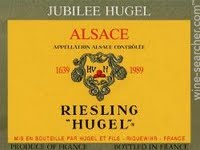 Over the past few weeks I have eaten at several new restaurants around the state and smiled as I saw the tried and true Riesling on each of the wine lists. Just as I have rallied readers to get on board with the rose revival, I think it is time to include Riesling in my aspirations. Riesling is one of the oldest white wine varietals but continues to live in the shadow of the ever-popular chardonnay, pinot grigio and well, almost any other white wine.
Over the past few weeks I have eaten at several new restaurants around the state and smiled as I saw the tried and true Riesling on each of the wine lists. Just as I have rallied readers to get on board with the rose revival, I think it is time to include Riesling in my aspirations. Riesling is one of the oldest white wine varietals but continues to live in the shadow of the ever-popular chardonnay, pinot grigio and well, almost any other white wine.
We all know Riesling had an image problem in America, with most styles being thought of as simple and sweet wine. But today things are changing dramatically, with more and more wineries refining the taste profiles that range from lusciously sweet to very dry.
Trying to decide which country produces the best Rieslings would spark an endless debate. There are excellent versions made around the world. The only demand this grape has on the vineyard is the need for a cool climate. Known as the classic regions for this grape, (and generally the best expressions) are France’s Alsace, Germany and, though rarely seen in our market, Austria. Other places offering terrific and generally under priced Rieslings are New York’s Finger Lakes, Washington state and Australia’s Claire Valley.
As I have written before, the key to buying great Riesling is paying attention to the label. Kabinett being the driest and Auslese the sweetest. Beerenauslese, Trockenbeereanauslese and Eiswein are always a dessert-style, lusciously sweet wine.
If you still need convincing, Riesling is an extremely food-friendly wine. It works well with the flavors of most foods, which is why we are seeing it more and more on the premium side of wine lists in restaurants around Arkansas. Its classic partners are dishes with creamy sauces, veal and the spiciness and sweetness of Asian food. We all have different tastes, but my only experiences with Riesling and a not so good pairing was with some Mediterranean flavors like olive oil, garlic, tomatoes and rare beef.
THE VALUES
- 2011 Rudi Wiest Mosel River Riesling, Germany (about $15 retail)
- 2011 Snoqualmie Naked Riesling, Washington (about $13 retail)
THE SPLURGES
- 2011 Hugel Alsace Riesling, France (about $28 retail)
- 2011 Trimbach Riesling, France (about $27 retail)
 There are countless rules surrounding wine, but one of my least favorites is the old-fashioned guidance, “Always cook with the same wine you will be drinking.” I remember the first time the rule struck me as one I would not be following in my kitchen. I was making beef stew and the recipe instructed me to add two cups of red wine. It just happened the wine I was serving and had opened for dinner was a beautifully aged Bordeaux. I could not convince myself to pour half of my bottle into the pot. Thus beginning my exploration of wine being used as a cooking ingredient.
There are countless rules surrounding wine, but one of my least favorites is the old-fashioned guidance, “Always cook with the same wine you will be drinking.” I remember the first time the rule struck me as one I would not be following in my kitchen. I was making beef stew and the recipe instructed me to add two cups of red wine. It just happened the wine I was serving and had opened for dinner was a beautifully aged Bordeaux. I could not convince myself to pour half of my bottle into the pot. Thus beginning my exploration of wine being used as a cooking ingredient.

 Valentine’s Day is Friday and if you’re stuck on what wine to buy, here are some ideas. With so many choices, I called local retailers for advice on what is trending for love birds.
Valentine’s Day is Friday and if you’re stuck on what wine to buy, here are some ideas. With so many choices, I called local retailers for advice on what is trending for love birds. Recently Cornerstone Winery founder Dr. Michael Dragutsky and his wife, Beni, spent time in central Arkansas tasting and dining with other wine lovers. Living just up the road in Memphis, Dragutsky, when not practicing medicine full time, is promoting and sharing the story of his exceptional wines and mission.
Recently Cornerstone Winery founder Dr. Michael Dragutsky and his wife, Beni, spent time in central Arkansas tasting and dining with other wine lovers. Living just up the road in Memphis, Dragutsky, when not practicing medicine full time, is promoting and sharing the story of his exceptional wines and mission.